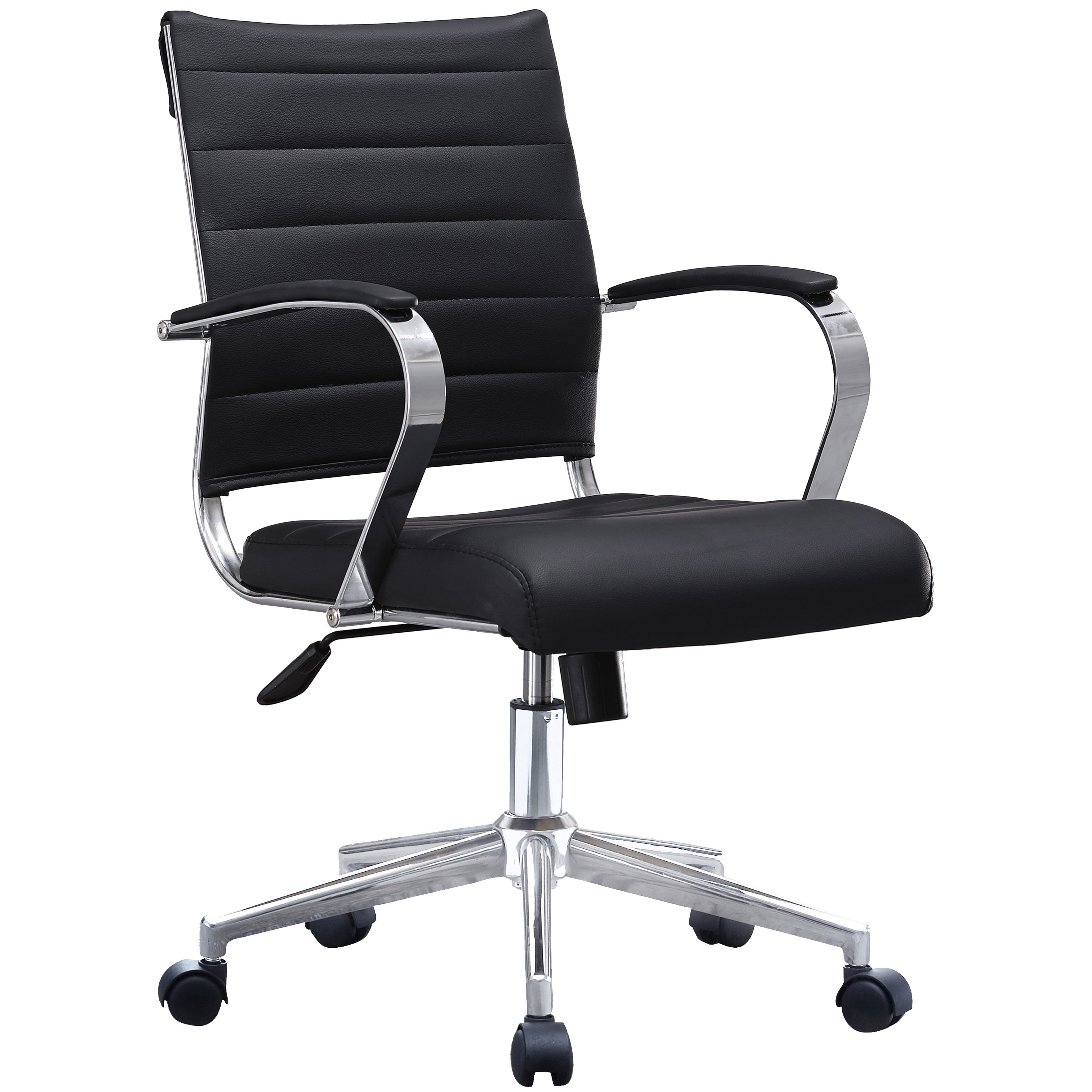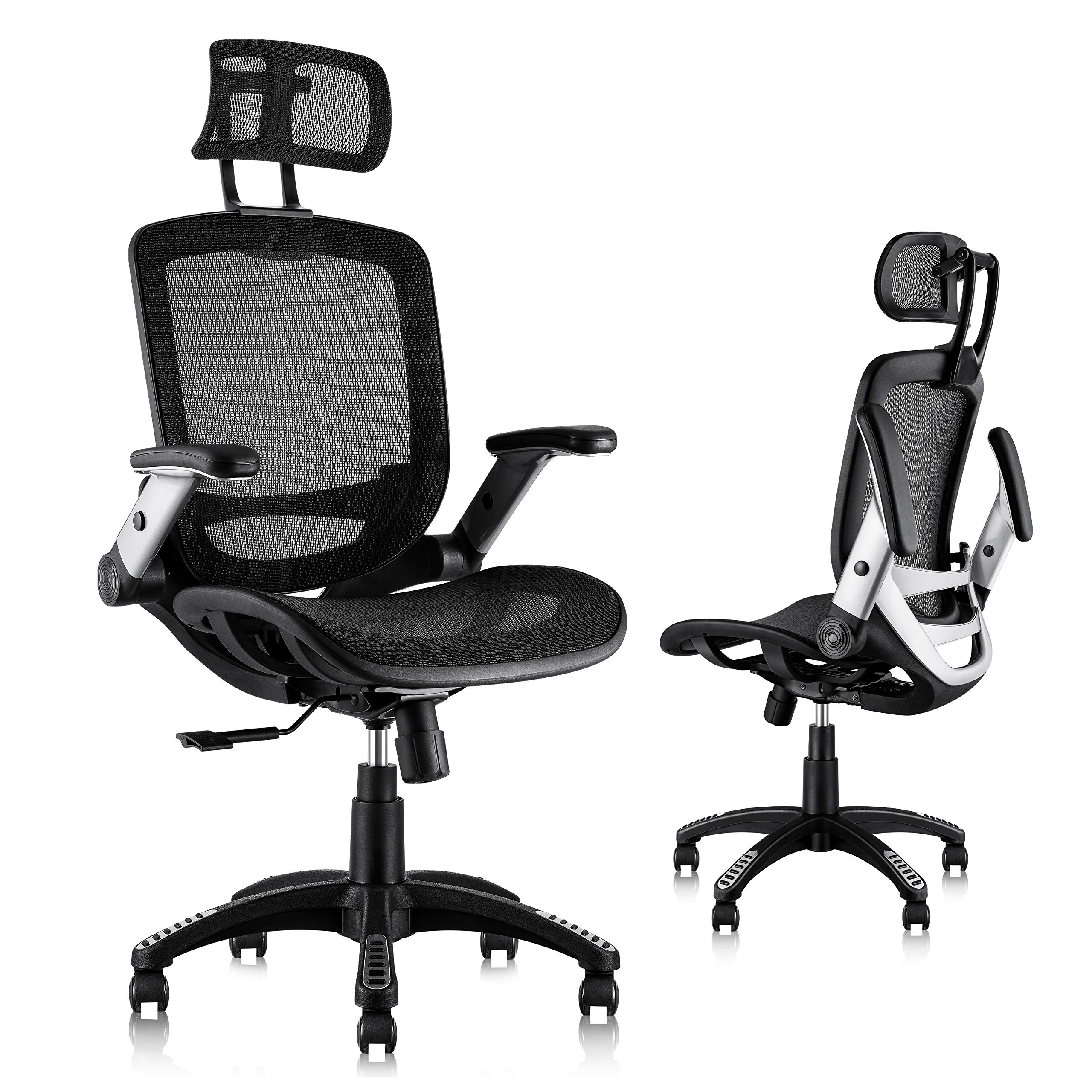Benefits of High Back Computer Chairs

In the pursuit of a fulfilling life, we often strive for balance and harmony, both within ourselves and in our surroundings. Just as a balanced diet nourishes the body, a well-designed workspace can nourish the mind and spirit, fostering clarity, creativity, and productivity. Among the many elements that contribute to an ergonomic workspace, a high back computer chair stands out as a cornerstone of comfort, support, and well-being.
Lumbar Support and Back Health
A high back computer chair provides exceptional lumbar support, which is crucial for maintaining proper posture and preventing back pain. The human spine is naturally curved, and the lumbar region, the lower back, requires specific support to maintain this curve. When sitting for prolonged periods, the muscles in the back can become fatigued, leading to slouching and improper posture. This can strain the spine, compress nerves, and cause discomfort or pain.
- A high back chair with adjustable lumbar support can help to align the spine, reducing pressure on the lower back and promoting a more natural posture.
- The chair’s contoured backrest conforms to the shape of the spine, providing targeted support and reducing strain on the muscles.
- This support can also improve blood circulation in the back, reducing stiffness and promoting overall back health.
Reduced Neck Strain and Improved Comfort
High back computer chairs are designed to support the entire back, including the neck. This is particularly beneficial for individuals who spend long hours working at a computer.
- The extended backrest provides a comfortable resting point for the head, reducing the strain on the neck muscles.
- This can prevent headaches, neck pain, and stiffness that often result from prolonged sitting with poor posture.
- Adjustable headrests allow you to customize the chair’s support to your specific needs, ensuring optimal comfort and reducing the risk of neck strain.
Adjustable Features and Ergonomic Benefits
Adjustable features, such as headrests, armrests, and seat height, are essential for creating a truly ergonomic work environment. These features allow you to customize the chair to your body size and posture, ensuring optimal comfort and support.
- Adjustable armrests can help to reduce strain on the shoulders and elbows by providing a comfortable resting point for the arms.
- A high back chair with adjustable seat height allows you to maintain proper leg positioning, promoting blood circulation and reducing pressure on the legs.
- By allowing you to adjust the chair to your specific needs, you can maintain a neutral posture, minimizing stress on your joints and muscles.
Choosing the Right High Back Computer Chair

Selecting the perfect high back computer chair is an essential investment in your well-being, especially if you spend long hours sitting. It’s about finding a chair that aligns with your needs and preferences, supporting your body’s natural curves and promoting good posture. Just as a skilled artisan carefully chooses the right materials for a masterpiece, so too should you consider the various elements that make up a high-quality chair.
Material Considerations
The material of a high back computer chair significantly impacts its comfort, durability, and aesthetics. Here’s a breakdown of popular materials and their advantages and disadvantages:
- Mesh: Mesh fabric is known for its breathability, allowing air to circulate and prevent you from feeling overheated. It also provides good support and conforms to your body’s shape. However, mesh can sometimes feel less luxurious than other materials and may not be as durable.
- Leather: Leather offers a premium feel and a timeless aesthetic. It’s durable and easy to clean. However, leather can be more expensive than other materials and may not be as breathable.
- Fabric: Fabric chairs come in a wide range of colors, textures, and patterns, offering excellent customization options. Fabric is generally more affordable than leather and can be more breathable than mesh. However, fabric can be prone to staining and may require more frequent cleaning.
Adjustability and Positioning
The adjustability of a high back computer chair is crucial for providing optimal comfort and support. Here are key aspects to consider:
- Seat Height: The seat height should allow your feet to rest flat on the floor with your thighs parallel to the floor. This ensures proper blood circulation and reduces strain on your legs and back.
- Backrest Adjustments: A high back chair should have a backrest that can be adjusted to support your lumbar curve. This helps maintain proper posture and reduce lower back pain.
- Armrest Positioning: Adjustable armrests allow you to position your elbows at a 90-degree angle, reducing strain on your shoulders and neck. The armrests should also be positioned at a height that allows your forearms to rest comfortably on the desk.
Features for Different Needs
The ideal high back computer chair varies depending on your specific needs and activities. Here are some key features to consider:
- Gaming: Gaming chairs often feature high backrests, lumbar support, and adjustable armrests to provide comfort during extended gaming sessions. They may also have additional features like headrests, footrests, and built-in speakers.
- Office Work: Office chairs should prioritize ergonomics and support. They typically have adjustable seat height, backrest, and armrests, along with features like breathable mesh fabrics and lumbar support.
Determining Chair Size and Weight Capacity
Choosing the right chair size is essential for comfort and support. Consider your height, weight, and body type. Most chairs have weight capacity limits, which should be carefully considered. It’s generally recommended to choose a chair with a weight capacity that exceeds your weight by at least 20-30%.
Remember, a high back computer chair is an investment in your well-being. Choose wisely, and your body will thank you for it!
Ergonomics and Posture

Ergonomics is the science of designing and arranging things people use so that the interaction between the person and the thing is most efficient and safe. When it comes to chairs, ergonomic design focuses on supporting the natural curves of the spine and promoting good posture, especially during extended periods of sitting.
Understanding Ergonomic Seating
Ergonomic seating is designed to promote a neutral spine posture, reducing strain on muscles and joints. This is achieved by providing support for the lumbar region (lower back), ensuring proper thigh and knee alignment, and allowing for adjustable features to accommodate individual body shapes and preferences.
Proper Sitting Posture with a High Back Chair
A high back chair can significantly contribute to maintaining proper posture. Here’s how:
- Lumbar Support: The high back provides support for the lower back, helping to maintain the natural S-curve of the spine. This prevents slouching and reduces strain on the back muscles.
- Head and Neck Support: The high back also extends upwards, offering support for the head and neck. This helps to keep the head aligned with the spine, preventing forward head posture and neck pain.
- Armrests: Adjustable armrests allow for proper positioning of the arms, reducing strain on the shoulders and wrists.
- Seat Height Adjustment: Adjusting the seat height ensures that your thighs are parallel to the floor and your feet are flat on the ground. This prevents pressure on the back of your thighs and promotes good circulation.
Ergonomic Adjustments for Improved Posture
Here’s a table highlighting key ergonomic adjustments and their benefits for posture:
| Adjustment | Benefit | Lumbar Support: Adjustable lumbar support provides customized support for the lower back, promoting a neutral spine posture and reducing strain on the back muscles. | Reduces lower back pain and strain, improves posture, and promotes a healthy spine alignment. | Seat Depth: Adjusting the seat depth ensures that the chair supports the entire length of the thighs, preventing pressure on the back of the thighs and promoting good blood circulation. | Reduces discomfort and numbness in the legs, improves circulation, and promotes a more comfortable sitting experience. | Seat Tilt: A slightly tilted seat can help to reduce pressure on the thighs and promote a more comfortable posture. | Reduces strain on the legs and promotes better blood flow, leading to a more comfortable and ergonomic sitting experience. | Armrest Height: Adjustable armrests allow for proper positioning of the arms, reducing strain on the shoulders and wrists. | Reduces shoulder and wrist pain, promotes a more comfortable posture, and helps to prevent repetitive strain injuries. | Headrest: A headrest provides support for the head and neck, helping to keep the head aligned with the spine and preventing forward head posture. | Reduces neck pain and strain, promotes a more comfortable and relaxed posture, and helps to prevent headaches. |
|---|
Tips for Maintaining Good Posture, High back computer chair
- Take Regular Breaks: Get up and move around every 30-60 minutes to stretch your muscles and improve blood circulation.
- Stretch Regularly: Engage in regular stretches throughout the day to loosen tight muscles and improve flexibility.
- Be Mindful of Your Posture: Pay attention to your posture throughout the day and make adjustments as needed.
- Use a Standing Desk: Alternating between sitting and standing throughout the day can help to reduce the negative effects of prolonged sitting.
